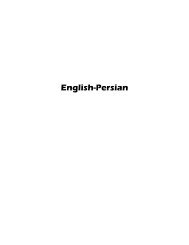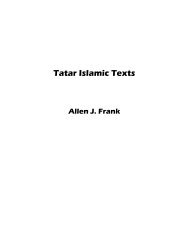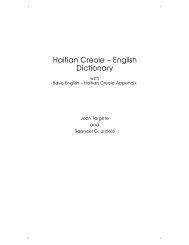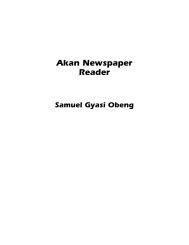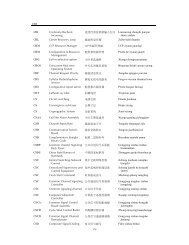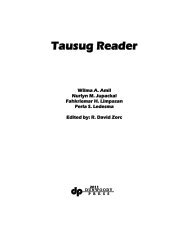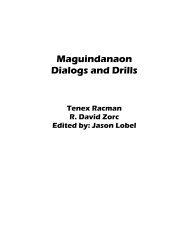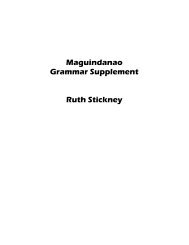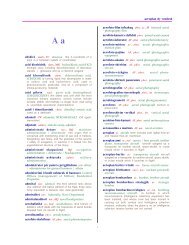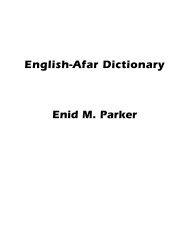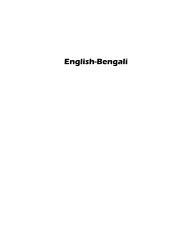Zulu Newspaper Reader - Dunwoody Press
Zulu Newspaper Reader - Dunwoody Press
Zulu Newspaper Reader - Dunwoody Press
Create successful ePaper yourself
Turn your PDF publications into a flip-book with our unique Google optimized e-Paper software.
nasojwini ‘and in (or from) honey.’ One would not know that the<br />
noun izinti ‘sticks’ should be looked up under -thi or uthi ‘stick’<br />
depending upon the dictionary consulted, or that -lunyw- ‘be bitten’<br />
derives from -lum- ‘bite,’ -khishw- ‘be taken out’ from -khiph- ‘take<br />
out,’ and -vez- ‘bring out’ from -vel- ‘come from.’<br />
Using the Vocabularies and Glossary<br />
The vocabularies that appear at the end of each reading are given in<br />
the order in which they appear in the text, and not alphabetically<br />
(The Glossary, on the other hand, is given alphabetically.). In longer<br />
readings the text is divided into sections with each section preceded<br />
by a number, «x», that is repeated in the vocabulary to facilitate<br />
location of an item. Any item that has already appeared previously in<br />
a vocabulary is not repeated. If the reader is not familiar with a form<br />
in a particular reading, and cannot find it in the vocabulary<br />
concerned, then one should check the overall Glossary (p. 275).<br />
Another reason that a particular item may not be found in a<br />
vocabulary, even though it has not appeared before, is that it should<br />
be easily deduced from previous knowledge. Thus, for example, if<br />
the noun izicelo ‘requests’ were to occur in a reading, it would not<br />
be given in the vocabulary if the singular, isicelo, has appeared<br />
previously, since a knowledge of the noun prefixes and noun class<br />
system should tell one unambiguously what the singular form would<br />
be. However, we have made sure that the singulars of all nouns are<br />
given in the Glossary.<br />
The vocabularies and the overall Glossary have the following<br />
structure:<br />
ABC def, ghi (jk) [L; M; N] {P} Sx, Sy<br />
where ABC is the <strong>Zulu</strong> form (morpheme, word or phrase), which is<br />
given in alphabetical order. This is followed by ‘def, ghi’ which are<br />
one or more English glosses of the <strong>Zulu</strong>. Extra information about the<br />
meaning, such as the literal meaning of a phrase, or some<br />
explanation is sometimes given in (jk). Grammatical information,<br />
such as part of speech, noun class, singular or plural forms, tense,<br />
mood and aspect are given in [L; M; N]. Useful information such as<br />
the fact that a conjunction or auxiliary verb may require a particular<br />
mood to follow it is also given in the square brackets. Here too,<br />
information about the derivation of an item may be included, with<br />
more detail sometimes being given in the Glossary than in the<br />
vii



